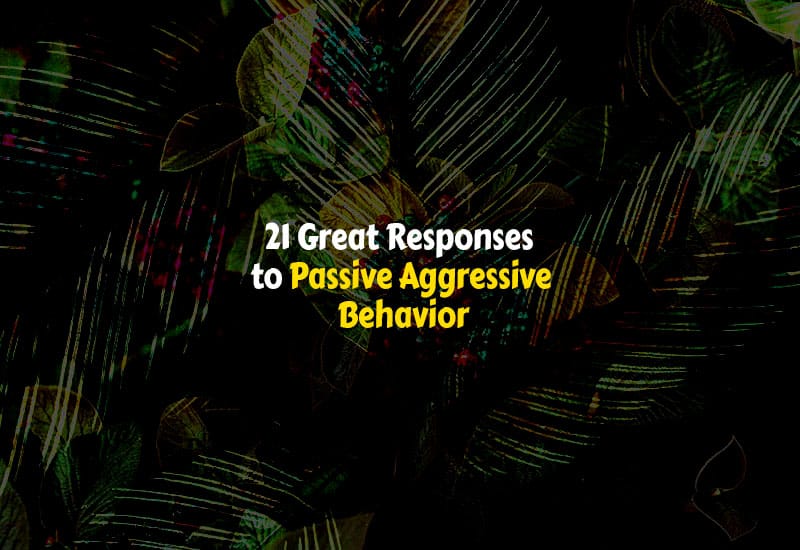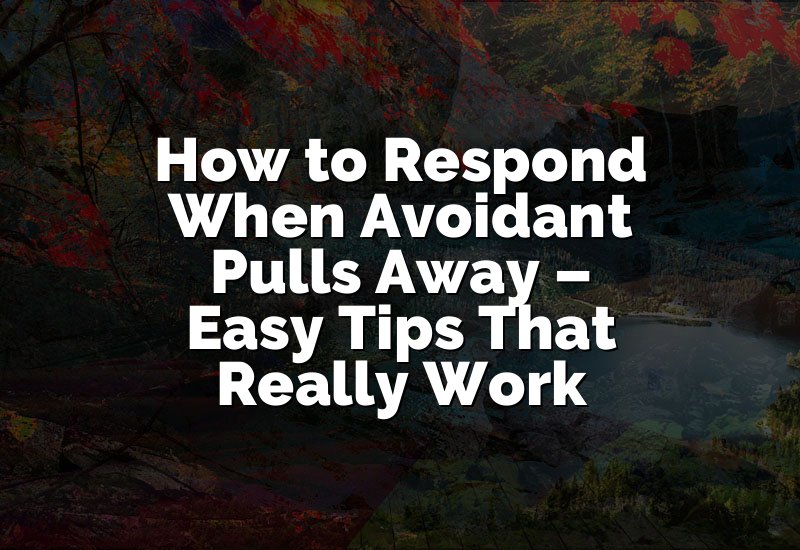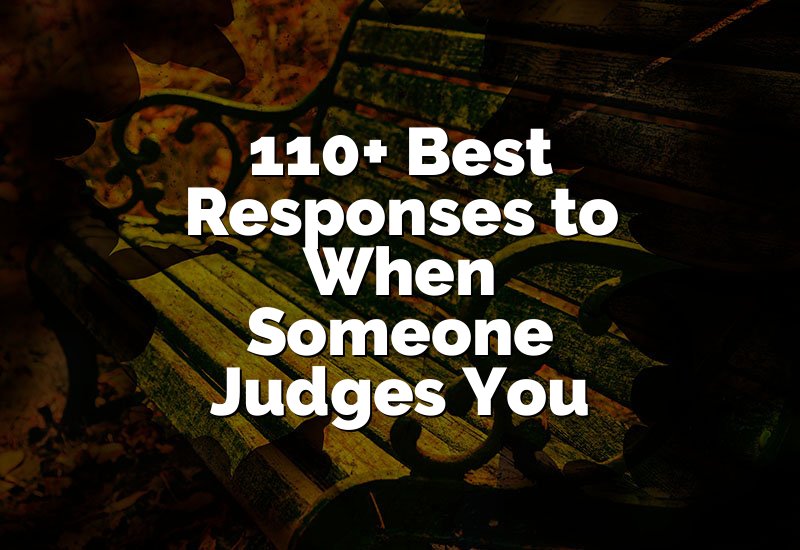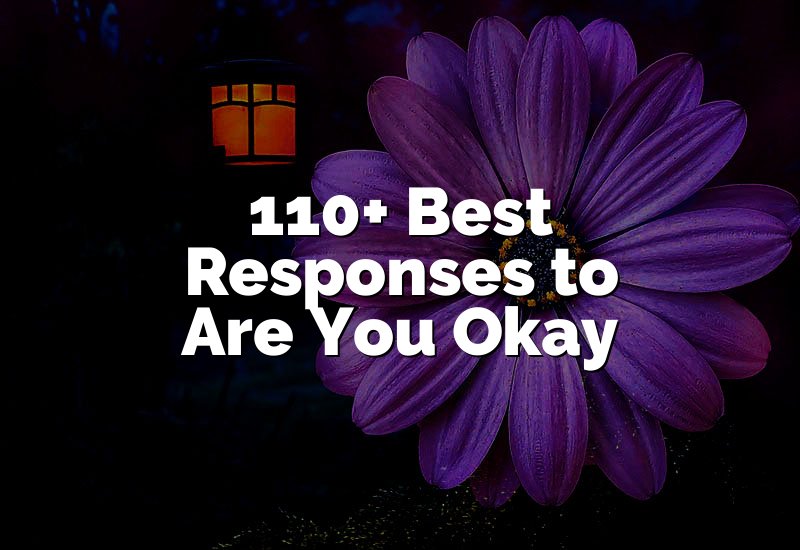Dealing with passive-aggressive behavior can be tricky, especially when it's subtle or disguised as harmless comments. Whether it's in the workplace, with friends, or even at home, understanding how to respond to passive-aggressive actions is key to maintaining your own peace. Let's dive into how you can handle this situation with calm, clarity, and confidence!

1. Stay Calm and Collected
When dealing with passive-aggressive behavior, the first thing you need to do is keep your cool. It's easy to get frustrated, but that's exactly what the person wants. By staying calm, you take away the power they have over your emotions.
- You can say something like, "I understand this is frustrating. Let's talk about it directly."
- Avoid raising your voice or reacting emotionally.
- Keep your body language neutral and open.
By responding calmly, you maintain control of the situation and show the other person that their behavior won't provoke a negative reaction from you.
2. Acknowledge the Underlying Emotion
Passive-aggressive behavior is often a way for someone to express frustration without doing it directly. By acknowledging their hidden feelings, you can make them feel heard.
- "It seems like something is bothering you. Can we talk about it?"
- "I can tell this issue is frustrating for you. Let's discuss it openly."
- "I get the sense you're upset. Would you like to talk about what's going on?"
This helps the person feel safe to express themselves without resorting to passive-aggressive tactics.
3. Use "I" Statements
When responding to passive-aggressive comments, using "I" statements can help prevent the situation from escalating. It puts the focus on your feelings and avoids blaming the other person, which can help defuse their defensive behavior.
- "I feel like we're not on the same page about this issue."
- "I feel uncomfortable when you make comments like that."
- "I would prefer if we could discuss things openly instead."
This way, the conversation stays focused on your feelings rather than pointing fingers, which can lead to a more productive discussion.
4. Address the Behavior Directly
Sometimes, the best approach is to directly call out the passive-aggressive behavior. Doing so respectfully and without judgment can help clear the air.
- "It feels like you're hinting at something. What's really bothering you?"
- "I noticed that you said something that seemed a bit indirect. Could we address it directly?"
- "I feel like there's an underlying issue here that we need to talk about."
By addressing the behavior head-on, you let the person know you're aware of it and encourage a more straightforward conversation.
5. Maintain Boundaries
It's important to set clear boundaries with someone who exhibits passive-aggressive behavior. Make sure they understand what is acceptable and what isn't.
- "I'm not comfortable with that kind of comment."
- "I would appreciate it if we could discuss things honestly and without sarcasm."
- "If you have an issue, let's talk about it directly. I'm here to listen."
Setting boundaries allows you to take control of the situation and ensure respectful communication.
6. Be Assertive, Not Aggressive
Being assertive means standing up for yourself and expressing your thoughts and feelings confidently without attacking the other person. It's key when dealing with passive-aggressive behavior.
- "I don't think that's a fair way to address this issue."
- "Let's get to the point and have a direct conversation about it."
- "I think it's important that we're honest with each other."
Assertiveness ensures your voice is heard and that you don't tolerate passive-aggressive tactics.
7. Seek Clarity
Sometimes passive-aggressive remarks can be unclear, making it difficult to understand the real issue. Asking for clarification can help avoid miscommunication.
- "Can you clarify what you mean by that?"
- "I'm not sure I understand. Could you explain what you're trying to say?"
- "It sounds like you're saying one thing but implying another. Let's talk it out."
By seeking clarity, you show that you're willing to understand, but also that you expect transparency.
8. Stay Focused on the Issue
Passive-aggressive comments can often distract from the main topic, making the conversation go in circles. Stay focused on the issue at hand.
- "Let's keep the conversation about the problem, not personal comments."
- "I think we need to address the actual issue and not the distractions."
- "I'd prefer to stay on topic and find a solution together."
Staying focused ensures that you're solving the problem, rather than getting caught in the passive-aggressive cycle.
9. Avoid Engaging in Sarcasm
When faced with passive-aggressive behavior, it's tempting to respond sarcastically. However, this can escalate the situation rather than resolve it.
- "I understand that you're frustrated, but sarcasm isn't helpful right now."
- "Let's keep this conversation respectful and focus on the issue."
- "Sarcasm doesn't solve the problem; let's talk about it directly."
Responding without sarcasm helps you maintain a positive tone and keep the conversation productive.
10. Offer a Solution
Instead of getting bogged down in the passive-aggressive behavior, steer the conversation toward a solution. This shows you're focused on resolving the issue.
- "Let's work together to figure out a solution to this."
- "What can we do to move forward and avoid this situation?"
- "I think we can come up with a solution that works for both of us."
By offering solutions, you demonstrate that you're solution-oriented, not caught up in the negativity.
11. Don't Take It Personally
One of the best ways to respond to passive-aggressive behavior is to not take it personally. Understand that their actions are more about them than about you.
- "I know this is more about your frustration than anything else."
- "I understand you're upset, but I don't take it personally."
- "This seems like something you're dealing with, and I'm here to talk if you want to."
This helps you stay emotionally detached, preventing you from reacting in a way that fuels the negativity.
12. Set Expectations for Future Conversations
By setting expectations for future conversations, you can reduce the chances of encountering passive-aggressive behavior again.
- "In the future, let's try to communicate more directly."
- "I think we'll get along better if we address issues head-on."
- "Next time, let's try to have a more open conversation."
Setting these expectations helps guide future interactions and reduces misunderstandings.
13. Take a Break if Needed
If things start to get too heated, it's okay to take a step back and give yourself a break.
- "Let's take a breather and continue this conversation later."
- "I think we both need a moment to cool down before discussing this further."
- "I need some time to think about what's been said."
Taking a break allows both parties to gather their thoughts and approach the conversation more calmly.
14. Offer Empathy
Empathy can go a long way in diffusing passive-aggressive behavior. When you show that you understand the person's feelings, it creates a more open environment for communication.
- "I can see why you're frustrated, and I want to understand more."
- "I get the feeling that this issue is bothering you. Let's talk it through."
- "It seems like you've been holding something in. Let's address it."
Empathy shows you care, which can make the other person feel more comfortable opening up.
15. Don't Get Sucked into Their Drama
Passive-aggressive people often thrive on drama. By staying out of the drama and remaining neutral, you take away their ability to manipulate the situation.
- "I'm not going to get involved in the drama. Let's talk about the real issue."
- "I don't want to escalate things. Let's focus on finding a solution."
- "I'm here to have a constructive conversation, not to engage in drama."
By staying neutral, you avoid feeding into the passive-aggressive behavior.
16. Keep the Conversation Constructive
A productive conversation focuses on resolving the issue, rather than pointing fingers or making hurtful remarks.
- "Let's figure out how we can fix this problem together."
- "I think we need to find a way to work through this."
- "Instead of dwelling on the past, let's talk about how we can move forward."
By keeping the conversation constructive, you encourage resolution rather than more tension.
17. Recognize When It's Not About You
Sometimes passive-aggressive behavior has nothing to do with you. Recognizing this can help you avoid internalizing their actions.
- "I can tell this might be more about your stress than me."
- "This doesn't seem personal, but more about what's going on with you."
- "I get that you're having a tough time, and I'm here if you want to talk."
Recognizing when it's not about you can help you avoid unnecessary emotional reactions.
18. Give It Time
Not all issues need to be addressed immediately. Sometimes, giving it some time allows emotions to settle before tackling the issue head-on.
- "Let's talk about this when we both have had some time to think."
- "I think we both need some time to process this situation."
- "Let's revisit this conversation when we're both feeling calmer."
Taking time can allow both parties to approach the situation with a clearer head.
19. Don't Be Afraid to Walk Away
Sometimes the best way to handle passive-aggressive behavior is to walk away. If the situation isn't healthy or productive, it's okay to remove yourself.
- "I don't think this conversation is going anywhere, so I'll step back for now."
- "I think it's best if we talk later when we're both ready."
- "I'm going to give us both some space to calm down."
Walking away can be a sign of strength, not weakness, as it helps avoid further escalation.
20. Be Patient
Change doesn't happen overnight, especially with someone who displays passive-aggressive behavior. Be patient and understand that it may take time for them to open up.
- "I understand this may take time, and I'm here for the long haul."
- "I know this might be difficult for you, and I'm willing to be patient."
- "I get that it takes time to change, but I'm here to help when you're ready."
Patience shows that you're committed to resolving the issue in a calm and thoughtful manner.
21. Seek Outside Help if Necessary
If the passive-aggressive behavior continues and you can't handle it on your own, consider seeking help from a third party like a mediator or counselor.
- "Maybe we should talk to someone together to work through this."
- "I think getting outside help might help us communicate better."
- "Let's bring in a professional to help us address this."
Sometimes a neutral third party can help facilitate better communication and understanding.
I hope these responses give you some solid strategies for tackling passive-aggressive behavior head-on! By staying calm, using empathy, and keeping the conversation constructive, you can navigate tricky interactions with confidence and clarity.









